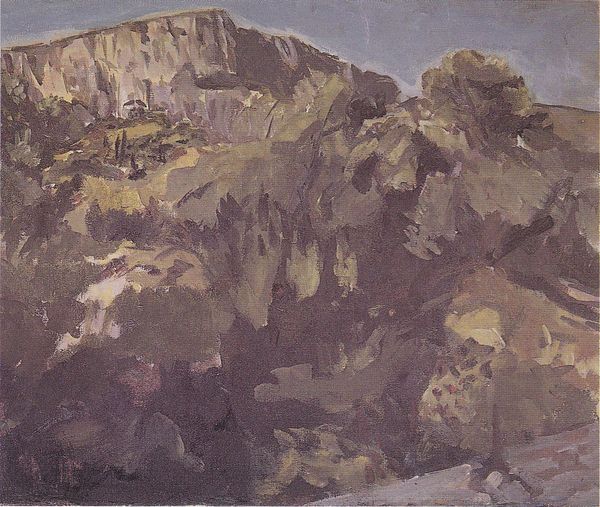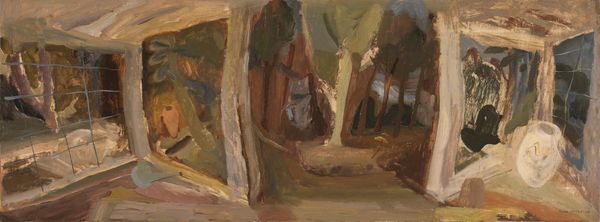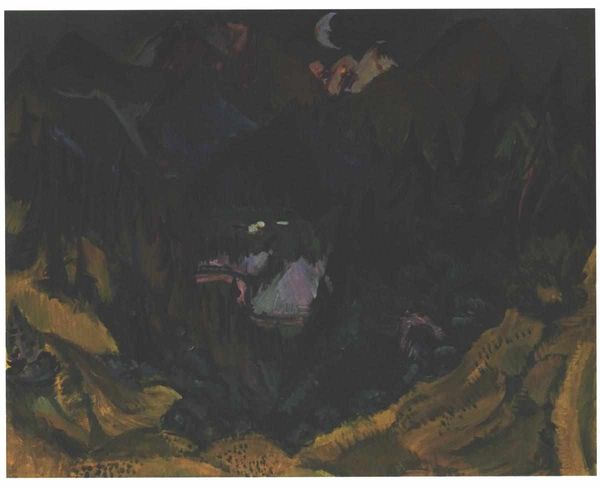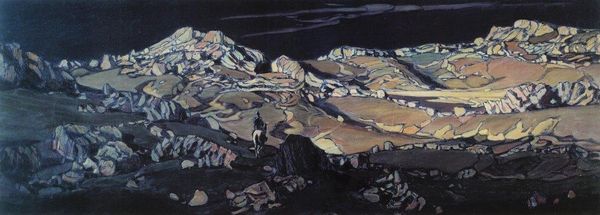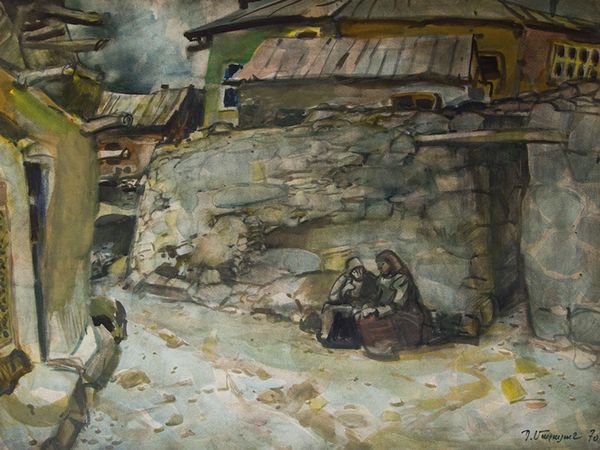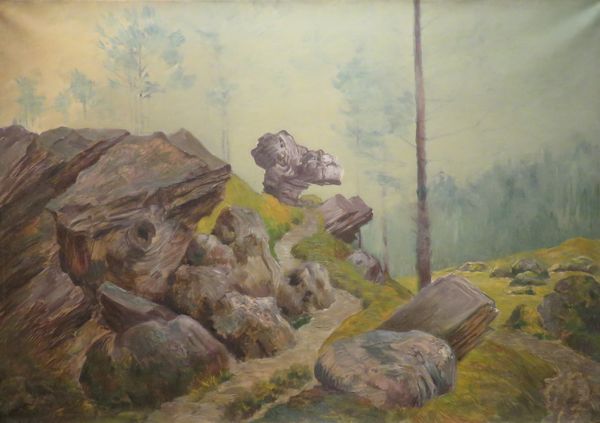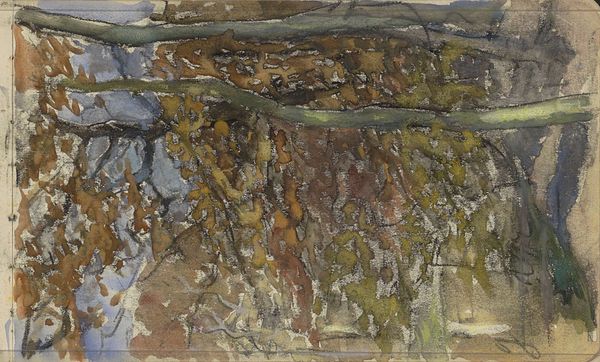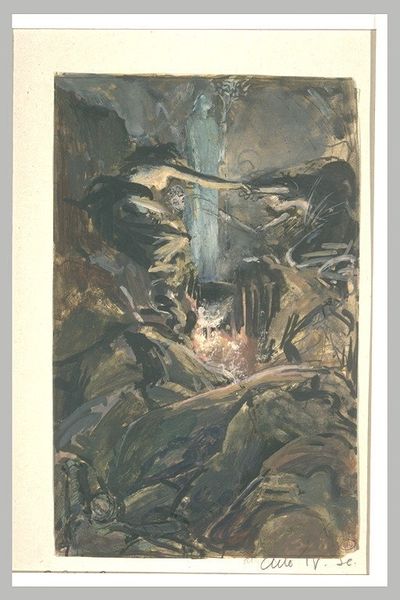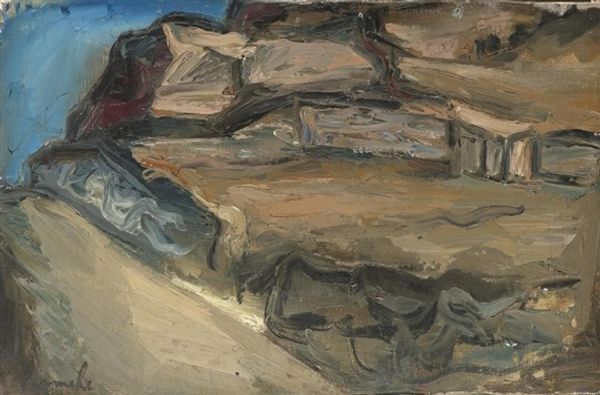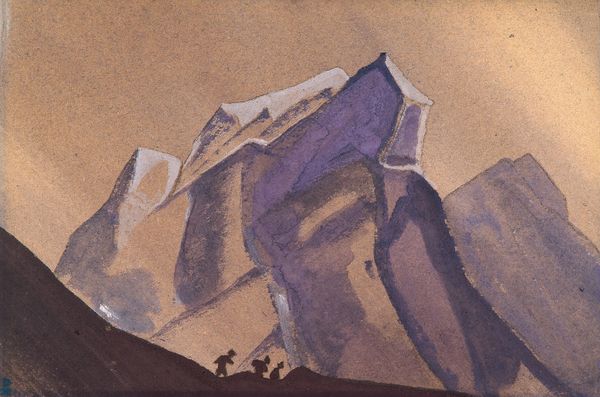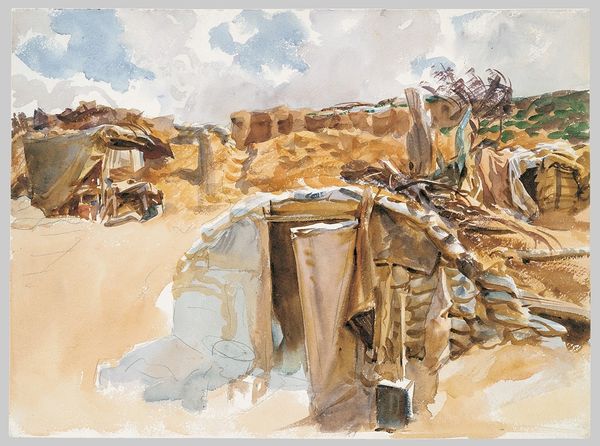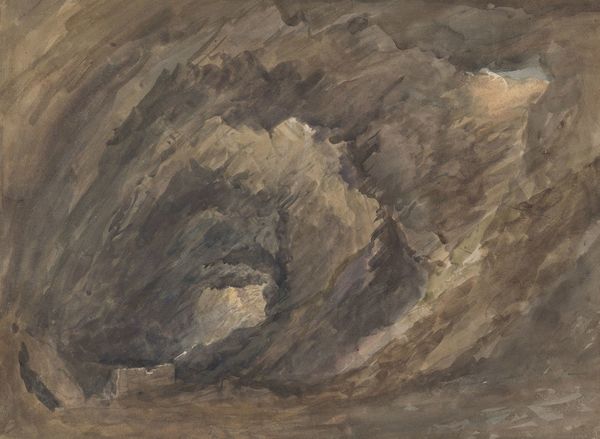
tempera, painting, impasto
#
tempera
#
painting
#
landscape
#
impasto
#
mountain
#
orientalism
#
symbolism
#
modernism
Copyright: Public domain
Editor: So, this is "Rond Rocks" by Nicholas Roerich, painted in 1911. It looks like it's tempera on canvas, and there's definitely some impasto. The rocks have this monumental, almost dreamlike quality because of the colours used. How do you interpret this work? Curator: The effectiveness of this work lies in its simplification of form, and deployment of colour. Roerich reduces the mountainous landscape to almost geometric planes, devoid of any atmospheric perspective. Notice how the interplay between light and shadow doesn’t delineate realistic depth, but instead flattens the composition. Editor: Yes, I see that now! The shadows seem almost arbitrarily placed. The colour palette contributes too; the use of pastel hues for something so massive feels unexpected. Curator: Precisely. This pushes the work beyond mere representation. Consider also the texture achieved through impasto. The physicality of the paint contrasts with the ethereal colour scheme, creating a tension that animates the entire surface. It is as much about paint and gesture, as it is about any resemblance to an actual landscape. Editor: So it's more about the experience of seeing, than what is depicted? Curator: Precisely. Roerich's success here relies not upon naturalism but on surface dynamism, achieved through bold forms and materiality. Were it painted smoothly it would surely lose its tension, wouldn’t you agree? Editor: Absolutely! Thinking about it now, I find it very compelling. I was too quick to consider only the colours and the mountains represented. Thank you. Curator: The pleasure is mine. It’s in such formal intricacies that we see art operating as its own unique, material language.
Comments
No comments
Be the first to comment and join the conversation on the ultimate creative platform.
